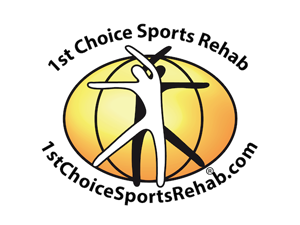Returning to CrossFit After an Injury
 It is hard to peruse the Internet and not come across a website or article that warns against CrossFit because of potential injuries. Headlines usually warn readers of the imminent dangers and injuries they will face if they decide to do CrossFit. Truth of the matter is, some of the latest research indicates that injury rates are similar to power lifting and gymnastics and lower than competitive contact sports like soccer and rugby. That study also calculated an injury rate per hours trained of 3.1 injuries per 1000 hours. * Consider that according to other literature, recreational and novice runners sustain 7.7 and 17.8 injuries per 1000 hours of running respectively.** Statistics aside, if an injury has been sustained, here are four steps an athlete can take that will help them recover and return to CrossFit.
It is hard to peruse the Internet and not come across a website or article that warns against CrossFit because of potential injuries. Headlines usually warn readers of the imminent dangers and injuries they will face if they decide to do CrossFit. Truth of the matter is, some of the latest research indicates that injury rates are similar to power lifting and gymnastics and lower than competitive contact sports like soccer and rugby. That study also calculated an injury rate per hours trained of 3.1 injuries per 1000 hours. * Consider that according to other literature, recreational and novice runners sustain 7.7 and 17.8 injuries per 1000 hours of running respectively.** Statistics aside, if an injury has been sustained, here are four steps an athlete can take that will help them recover and return to CrossFit.
4 Keys to Returning to CrossFit After an Injury
1. Let your body rest: A high incidence of injuries sustained in CrossFit is the result of overtraining. Over-training is a condition that involves applying too much stress to the body by means of physical activity. Basically, it’s not enough recovery time after increased amounts and intensity of training.
If a beginning or seasoned athlete is not physically prepared to perform constantly varied functional movements at relatively high intensity, then their bodies will suffer. Watch for warning signs like fatigue, disturbed sleep, lack of mental focus and increased resting heart rate, as these are all signs of overtraining. Allowing the body to rest appropriately will help to heal injuries and prepare the mind for returning to CrossFit.
2. Continue to exercise: This of course comes with a caveat. First, an injured athlete should seek the help of a qualified doctor (chiropractic, physical therapist or medical…in no particular order) so the specific nature of the injury can be identified. Once this has taken place, more specific recommendations can follow so that the injured athlete isn’t stuck at home doing nothing. Most injuries do not prevent the athlete from working on mobility work or auxiliary exercises. If the shoulder is hurt, take the time to specifically address mobility issues of the lower extremity and work on squat form. If the low back is injured, it is a wonderful time to address and fix the all too common flexed thoracic spine or work on unilateral body work. These recommendations are general but they can give the athlete a sense of purpose and a goal to look forward to.
3. Set realistic expectations for return: All too often, the pain from an injury is gone and that athlete assumes that they are cleared to not only exercise at the frequency they were at, but also at the level and intensity. This error in thinking usually lands them in their doctor’s office again but with more frustration and sometimes more damage to the structures. The body is a very complex organism and sometimes it has to relearn how use individual parts as well as entire regions again, even before load is introduced. Talk the coaches at the gym and communicate with them regularly as you consider returning to CrossFit. They need to be aware of injuries so they can provide appropriate modifications and scaling to the athlete.
4. Listen to your body: When asked by an athlete if they can return to working out, a good general question to get them thinking about their condition is, “do you feel ready?” Many times and for many reasons, the body will give us clues as to how it can and should be trained. This is perhaps a subtle nuance that not many people possess prior to being injured. With injuries and experience, that subtle nuance can become a strong ally. Most CrossFitters experience some kind of discomfort during a workout. Part of the challenge of the workout is pushing past that because often it is of exhaustion, not pain. If there is pain, especially in the area that was injured, cease that activity and explore other options. Over time, those signals will go away and an athlete can safely resume their regular training.
As stated above, there is risk in just about everything in life. Just like all athletic endeavors, the risk of sustaining an injury is present with CrossFit. It is important to identify those risks, take proper steps to avoid more than necessary and then enjoy the journey and rewards it provides.
If you are injured, call our office at 404-377-0011 to schedule an evaluation.
Referenced articles:
* PMID: 24276294
** PMCID: PMC4473093
Decatur Office
2545 Lawrenceville Hwy
Suite 100
Decatur, GA 30033
404-377-0011
fax 770-939-9353
Johns Creek Office
9810-B Medlock Bridge Rd
Suite 104
Johns Creek, GA 30097
404-300-9931
fax 770-939-9353
